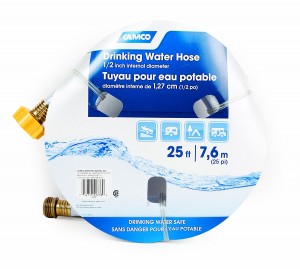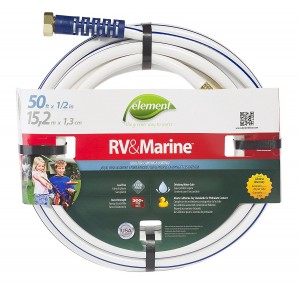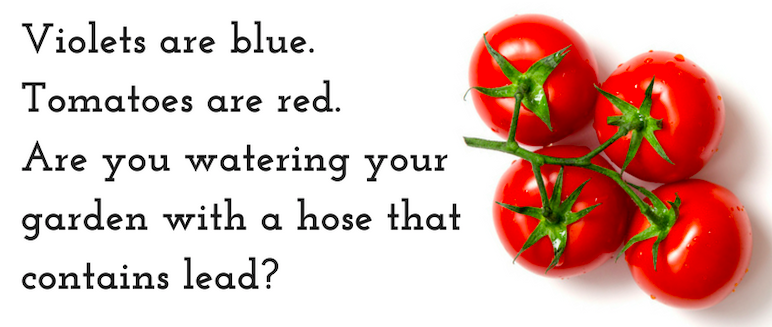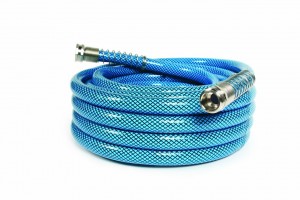#LeadedHousehold: Lead in Hoses
Posted: January 6, 2017
Below is a post I originally wrote and shared in June of 2014. I’ve slightly updated it for today. It’s a post I have shared often so I am re-sharing now, so those who are new to my page and my work have the benefit of the information provided. Thanks for reading, friends! – Tamara
 Many garden hoses contain unsafe levels of Lead in one or more components.
Many garden hoses contain unsafe levels of Lead in one or more components.
Lead is in a lot of things that are made of supple plastics or synthetic rubbers. It is often the ingredient used to treat the product that makes the material supple so that it does not crack or wear as quickly.
Warm (standing) water coming out of your standard garden hose in the summer months will likely have some amount Lead in it. The longer the water sits in the hose, the more time the Lead will have to leach into the water.
If you ARE using a standard hose, please consider flushing it out for at least a full minute with COLD water:
- before letting your children play in the water,
- before watering your garden with it (especially your vegetable garden) and
- before letting anyone (pets included, see article below) drink from the hose.
 Safer Choices:
Safer Choices:
Better yet: get a MARINE/RV grade drinking water delivery hose. These are usually blue or white (or white with a blue stripe down the side), although more and more hose manufacturers are wising up and upgrading their “regular” green garden hoses to be lead-free.

Below I have listed several good choices I found available today on Amazon.com.
Amazon links are affiliate links. If you purchase something after clicking on one of these links Lead Safe Mama, LLC may receive a small percentage of what you spend at no extra cost to you.

Pricing is current from the date of this post and may change
- This one is marketed as both Lead-free and BPA-free and is a 25 ft hose for just $9.97
- This one is a 35 foot hose marked as Lead-free, BPA-free and Phthalate-free for $24.97
- Here’s a 50-foot hose marketed as Lead-free, phthalate-safe and drinking water safe for only $19.98
- Here’s a 75-foot Lead-free hose intended for farm use for $45.85
- Also check out this Oregon company that makes lead-safe hoses!
Thanks for reading, happy shopping, and as always, please let me know if you have any questions (I will do my best to answer them personally as soon as I have a moment!)
Tamara Rubin
#LeadSafeMama
And some additional reading on the subject ( #LeadSafeGardening):
- http://containergardening.about.com/od/greencontainergardening/a/Gardenhose.htm
- http://www.ecocenter.org/healthy-stuff/new-study-rates-best-and-worst-garden-hoses-lead-phthalates-hazardous-flame-retardants-garden-hoses1
- http://www.wisegeek.com/what-is-a-lead-free-garden-hose.htm
- http://www.akitarescue.com/Water%20Hoses%20%26%20Health.htm
Never Miss an Important Article Again!
Join our Email List






I’ve been trying out a bunch of different lead free hose splitters but they have all broken or leaked in a matter of weeks in our hot AZ summers. It just kills me to say I’ve gone back to brass fittings because they hold up better. Do you know of any manufacturers of hose fittings (coupler and splitter) that hold up well and are lead free?
Also what do you think of the new stainless steel hoses? Apparently they have some kind of liner that concerns me. Thoughts?
Thank you for all you do!!!!
I just received this response from DRAMM in inquiry about their watering sprayers/nozzles. We are farmers so this type of equipment is crucial to our work.
“Thank you for your interest in our products. Many of them contain brass parts. Brass contains trace amount of lead. Our [DRAMM] One Touch Revolution and [DRAMM] One Touch Shower and Stream nozzles do not contain lead. These will be available locally at Ace, Do It Best or True Value or online at Amazon.com. Please let me know if I can be of further assistance.”
Wondering now about pvc pipe used in plumbing is it lead free?
CPVC is currently approved for water pipe use. PVC is only used for waste water. This always changes and it is certain that CPVC is not healthy per se. We set up stainless steel pipe and fittings for kitchen water.
I appreciate the awareness this article brought to something we don’t really think about. My only issue is that all but the last link to hoses are made of PVC or rubber which is much more toxic than Polyurethane.